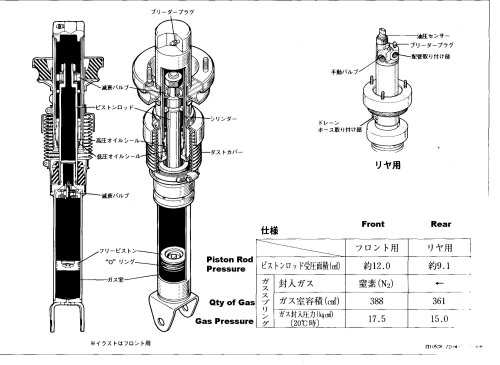
Before pulling apart my Active, again, I wanted to estimate how much nitrogen was in each shock accumulator.

With the correct amount of gas in the bottom accumulator - it appears that there is approximately 250 ml of oil above the piston. This is with the full weight of the car and the suspension charged up and running correctly. I used my cut open accumulator to measure the volume depicted in the above diagram.
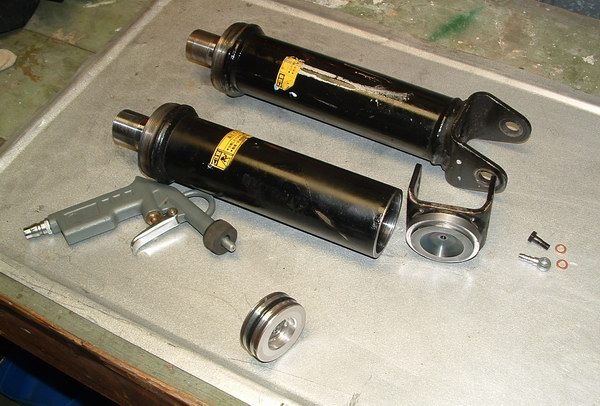
I thought that if I could support the car with jacks just enough to take the weight, then perhaps I could let the oil out of the bleed nipple on top of the shock to get an idea of how much gas was pushing the oil out - the volume and pressure of nitrogen below the piston was what I was interested in. If there is supposed to be 250 odd psi under the piston when it is at the top of the cylinder - then the pressure would be considerably higher when the nitrogen was compressed due to oil pressure above. When the bleed nipple is opened, the piston would rise up and push the oil above out. A nitrogen accumulator stores energy - it can supply pressurised oil to the suspension much quicker than the pump can - it is similar to an electrical capacitor in this respect. The pump supplies oil pressure which is stored against the nitrogen on the other side of the piston. If the nitrogen was at the correct pressure - then the piston is sitting approx. 1/3 from the bottom. When I release the nipple on top of the shock - the pressure should very energetically expel approx 250ml of suspension oil. If the pressure was a bit low, then there might be more oil being expelled but with a lower pressure. If the pressure was very low then perhaps the oil would only come out slowly and there might not be much coming out. So that was my theory - time to put to the test.
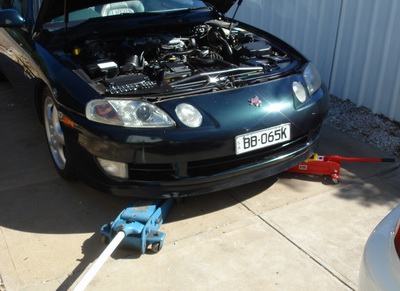
I supported the car with jacks under the tow hooks - just enough to lift the car a small amount - without them the car would hit the deck when the bleed nipples were opened. The three nuts holding the rubber boot on the top of the front shocks were removed to give access to the bleed nipples on top of the shocks.
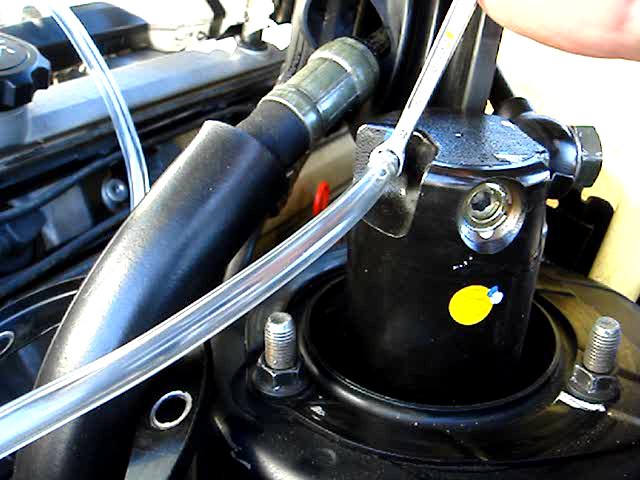
This is the front shock (this pic is a video capture - video is below). I used 2 metres of 5mm clear hose (cost of $2 from an hardware store) on the bleed nipple draining to an old clear drink bottle. An 8mm ring spanner turned 1/8 of a turn was plenty to drain the fluid. The allen key to the right of the bleed nipple is the lockout bolt. Screwing it all the way in locks out the shock and keeps fluid in. I locked all the shocks when removing the valve body a couple of years ago - doing this kept the car at the correct height while disconnecting other parts of the hydraulics.
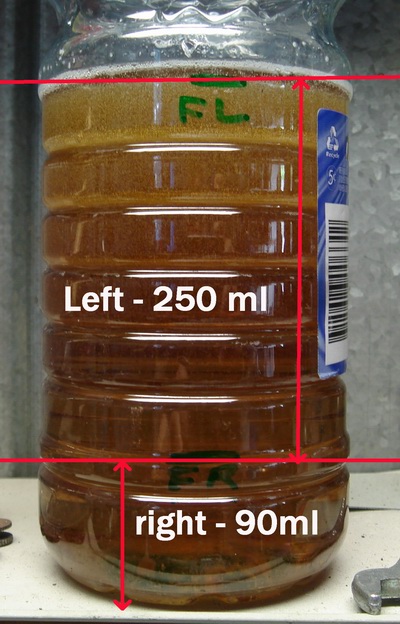
My right front shock ejected only a small amount of suspension oil - approx 90 ml and it didn't have much energy. I assume this meant that the nitrogen in the front right shock was low. The left shock ejected 250 ml of fluid and it came out with force. The difference between the two was marked - I even have small movies of it happening below. I thought it was a bit of a fluke that the left shock put out 250ml if fluid - the same as the amount I estimated. After the bleed I shut the nipples and started the car, put trans into Drive and let the shocks re-pressurise with oil before removing the jacks and going to the rear of the car.
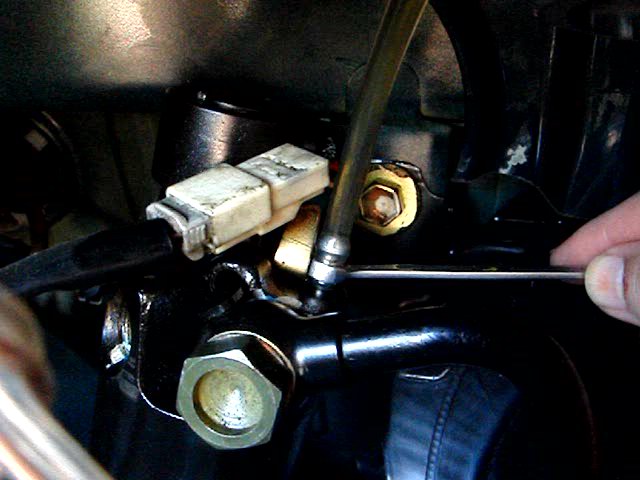
The rear shocks both ejected 250 ml of fluid with good force - again a bit of a fluke that both were the same. Well maybe not a fluke - I had my accumulators recharged 2 years ago - the front right one leaked and my bounce returned. I then replaced it with a second hand which is also a bit flat by the looks of it.
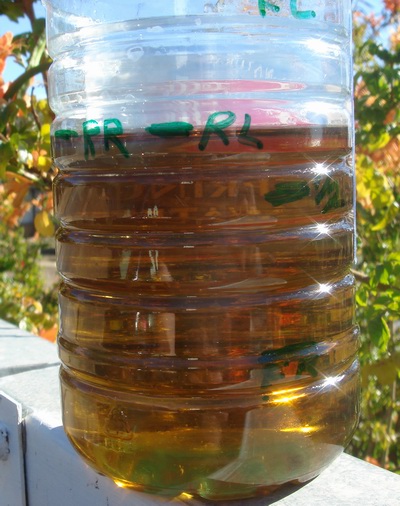
I was pleased that both rear shocks ejected the same amount, and both were the 250 ml that I had estimated. So it looks like 3 shocks have enough nitrogen and one, the front right, is getting low. In part 2 I will repeat the process when I have recharged the nitrogen in each accumulator to see if there is any difference in the results.
Movies: apologies for the audio - I set the camera up right in front of my nose so you hear me clearly grunting - sheesh! But at least the oil is also heard escaping. These are 1mb wmv movies.
A disappointing little spurt of oil from the front right shock - see and hear a small amount of fluid escape with very low pressure.
This is the same faulty shock - listen to the pathetic puff of gas out of the bottom of it - no good!! So 90 mls of oil expelled did mean hardly any gas.
This one is more like it - the front left shock gives that satisfying long rush of oil. I could hear the internal piston thunk into the top of the cylinder as the oil flow stopped.
The rears were consistent - good pressure and the right amount of oil.
This is one of the rear shocks, like the good left shock two years after I re-gassed them they have lots of gas left in them. This little vid shows what heaps of gas sounds like - I did find the aftermarket valve after it shot off! So lots of gas in the rear shocks expelled 250 ml of oil fast.
The beauty of the oil volume/pressure test is that the nipples can be tightened and the car started and transmission placed in drive to recharge the shocks with oil. All I had to do was make sure the reservoir was topped up with oil (and make sure the car wasn't going anyway when put in drive!). The other method to check the gas is to remove the gas port and listen to the gas escaping - but this is a once only test and you would have to get the accumulator recharged for sure. I'll be taking these shocks out and getting the accumulators valved and regassed and then do the test again. I imagine that this simple test could be done to verify if a suspect shock was getting low on nitrogen - without the pain of removing the shock.